Introduction
It has been our endeavour since the beginning of our practice to document all the cases that defy the ‘placebo effect’ affliction and hence can support the claim of homeopathy. Being students of George Vithoulkas, we have adapted the methods of classical homeopathy right from the beginning. Exercising the methods we have seen seemingly miraculous cures day in and day out. One such dramatic cure is that of gangrene. It has been our experience that gangrene is remarkably amenable to homeopathic treatment (4).
The pathology of gangrene is simple. In people with systemic disorders or lifestyle habits that lead to vascular diseases or to blocks in the circulation (diabetes mellitus, smokers etc.), a certain part may start dying due to decreased blood supply. This tissue death when superadded with infection, leads to a decaying state called gangrene (Homeopathy Treatment for Gangrene). Usually it is part of a limb that gets affected. The normal approach is debridement of the gangrenous wound and antibiotics. If that doesn’t help then amputation is the offered solution.
The problem is, amputation only removes the dead and decaying part but does not halt the process itself. Also, it is a big psychological brunt to be borne by the patient, not to mention the actual physical difficulties of losing a limb.
Here, we may draw the attention of the reader to the concept of collateral circulation. Our body is capable of establishing an alternative circulation to the part whose main supply is blocked. But, due to many factors such as the high blood sugar that is promoting rapid bacterial proliferation and the sheer magnitude of the block, the defence mechanism may not be able to do it in time on its own. And time, in these cases is at premium, due to imminent septicaemia or thrombosis. At such times, recourse to amputation may indeed save life.
However, if we have at our disposal, agents that can stimulate the immune system to develop the collateral circulation while also fighting the infection and reducing the blood sugar or other basic causes that have led to the state of gangrene, would not that be ideal? The truth is that we do have these agents in the form of homeopathic medicines. If applied adhering to the rules of health, disease and cure, as taught by the sire of homeopathy, Hahnemann, they can nudge the immune system in the right direction. We can appreciate the healing of gangrene from day to day.
A word of caution is necessary here. While homeopathic medicines can heal the gangrene, the attending doctor must have experience and knowledge regarding the dangers posed in these cases and the possible complications if anything goes wrong.
Here is presented a recent case of diabetic gangrene in which such a healing is evident. The important take home points from this case are as follows:
- Gangrene is a condition that can be treated with homeopathy, therefore avoiding the burden of amputation.
- Homeopathy can be used even in very serious pathologies when the theory is understood and applied well.
- ‘Levels of health’ as taught by prof Vithoulkas is a concept that is vital to understand the curability and prognosis in a given case.
- ‘Strategies of prescription’ as taught by prof Vithoulkas (2) help in determining the exact approach to a given case, hence preventing a lot of round about work and delay in understanding a case.
- When applied right, homeopathy can exhibit miraculous powers of healing and show the theory come alive in practice step by step.
Initial case taking:
30/01/2016
A 52 year old man with diabetes mellitus since 7 years, developed gangrene of the left second toe since three days. It started as a small wound on the underside of the second toe and progressed day by day into a non-healing condition. The patient had undergone wound debridement and it was suggested to amputate the toe, as there was absolutely no bleeding while the tissue was being debrided, suggesting a bad state of the circulation.
History of presenting complaints:
- Gangrene of left second toe
- Pitting oedema in the left lower extremity
- Slow wound healing
- Burning heat felt in the left foot > uncovering ++, fanning +++; < exertion
- Severe pain in the foot on touch, cannot put the foot on ground
- On examination, left foot was cold to touch
- Patient was a heavy smoker and consumed alcohol on a regular basis
- Desires salt +++, sweet++, pepper++,
- Thirst for cold water, 2 to 3 litres of water per day
- Fear of snakes ++
- Thermally tendency was towards hot ++
- Dreams of being thrown in water or as if laid on a railway track
Arterial and venous Doppler was performed for the left lower limb
Arterial Doppler: showed no significant narrowing or stenosis. But the arteries were heavily calcified and there were diffuse atherosclerotic changes seen.
Venous Doppler: showed few incompetent perforators, few enlarged groin lymph nodes and subcutaneous leg oedema.
Past history showed that he had been fairly healthy all his life.
Family history was considerably normal as well.
PRESCRIPTION:
Secale cornutum 30 c three times a day for 1 day
Dressing of the wound every day (for the dressing, only calendula mother tincture was used for the sake of sterilising the wound)
Analysis of the case:
In this case, though there is history of a chronic case developing in the form of diabetes mellitus, the gangrene has developed mainly as a result of retarded circulation as is evident from the Doppler. He has been a heavy smoker and as a result the atherosclerosis has affected his extremities.
If we consider the case in the light of his level of health, we see that he is from a higher group of health level. In these cases, we expect that the immune system is strong enough to put forth clear and striking prescriptive symptoms (3). Here, we not only have the background of pathology but also the peculiarity exhibited by symptoms. Therefore, clinically it is a case for prescription strategy based on totality of symptoms (2) . Also, in this case, we expect good recovery and eventual cure (3) .
Considering the pathology being circulatory in origin, along with the striking symptom of a cold part requiring vigorous fanning and the fact that he was aggravated by heat, Secale cor was selected as the remedy(1) .
Follow up:
| Date | Review | Prescription | Remarks |
| 31/01/2016 | Pain and burning in foot better
Swelling in foot had reduced Fasting blood sugar 232 mg/dl |
Secale cor 30 c three times 1 day | |
| 01/02/2016 | Pain and burning better by 90%. Was able to put foot down on the floor and walk.
Swelling better Post prandial blood sugar 362 mg/ dl |
Secale cor 30c three times 1 day | Patient had stopped the antihyperglycemics without consulting. He was advised to continue it till further stability in blood sugar |
| 02/02/2016 | Wound was healing with appearance of granulation tissue.
Swelling in foot better Random blood sugar 381 mg/dl |
Secale cor 30c three times/ day, for 2 days | Appearance of granulation tissue is a very good development as it indicates that the circulation is indeed improving |
| 04/02/2016 | Wound was healing well with proliferation of granulation tissue
Swelling in foot better |
Secale cor 30c three times daily for 4 days | |
| 08/02/2016 | No pain, no burning , swelling almost nil
Pus discharge + from the wound, nail bed was demarcated well on the toe Post prandial blood sugar 193 mg/dl Generally well |
Secale cor 30c three times daily for one week | |
| 18/02/2016 | Slight oedema of the gangrenous toe
No burning, slight pain, wound healing well Random blood sugar 183 mg/dl |
Secale cor 30c three times daily for 12 days | |
| 03/03/2016 | Wound healing well
Random blood sugar 172 mg/dl |
Secale cor 30c three times daily for 12 days |
The wound is dry now. No dressing needed here onwards |
| 14/03/2016 | The tip of the toe that had completely lost circulation had auto amputated and fallen off
Rest of the toe healing well Oedema better Random blood sugar 231 mg/dl |
Secale cor 30c four times daily for 12 days | Here, the blood sugar that had reduced increased again. Hence the extra dosage added |
| 28/03/2016 | Wound closing up well
Random blood sugar 246 mg/dl (patient reports the random blood sugar two days prior was 130) |
Secale cor 30c four times daily for 15 days | There is some fluctuation in the blood sugar for which he will need to be treated for some time before the balance occurs in that pathology. The follow up of that condition is beyond the intent of this presentation.
|
| 09/04/2016 | Wound is healing well with swelling in feet completely reduced
Post prandial blood sugar 230 mg/dl |
Secale cor 30c four times a day for one week | Here onwards the patient is being treated for the blood sugar and his gangrene is healed well |
During treatment
Healed toe with the completely dead part auto amputed
Conclusion:
The pathology in question is not the actual barrier for homeopathic treatment. It is the status of the immune system that is the real indicator. Once this is understood and the laws of homeopathy are applied meticulously, a larger portion of the disease burden on humanity may be lightened and even the afflictions that threaten to compromise the freedom of a person may be alleviated. But the laws must be adhered to and there can be no concession made on this.
Acknowledgement:
We acknowledge the co-operation of the patient and his kin in allowing us to publish this case. We acknowledge the teachings of George Vithoulkas through which alone, we were able to see the laws laid down by Hahnemann and the revelation of which has provided us with the means to help suffering fellow beings.
References
- Boericke, W., & Boericke, O. (1927). Pocket manual of homoeopathic materia medica. Philadelphia, Pa.: Boericke & Runyon.
- E-Learning Program by Prof. Vithoulkas. (2016). E-Learning Program by George Vithoulkas. Retrieved 9 April 2016, from https://www.vithoulkas.edu.gr/
- Vithoulkas, G., & Woensel, E. (2010). Levels of health. Alonissos, Greece: International Academy of Classical Homeopathy.
- Vithoulkas, G., Mahesh, S., & Mallappa, M. (2015). Gangrene: Five case studies of gangrene, preventing amputation through Homoeopathic therapy. Indian Journal Of Research In Homoeopathy, 9(2), 114. http://dx.doi.org/10.4103/0974-7168.159544



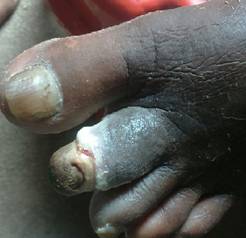
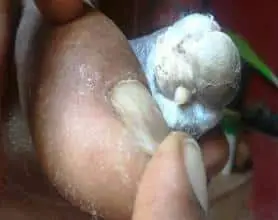

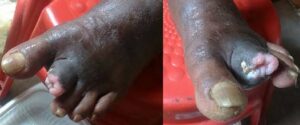
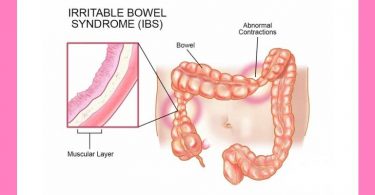
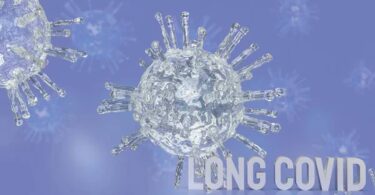

Dear Seema Mahesh.
Can I translate this articles for a Homeopathic Magazine of Pakistan for knowledge of junior doctors. If you have no objection, Please give your permission at my following e.mail address.
HOMEOPATHIC DOCTOR NAFEES IQBAL,
HINA HOMEOPATHIC CLINIC,
BCG CHOWK, BAHAWALPUR ROAD, MULTAN
PAKISTAN.
0300-6306509.
E.MAIL [email protected]
please email me your details to [email protected] we may continue the conversation there thank you
ars and secal near to specific for diabetes gangerine